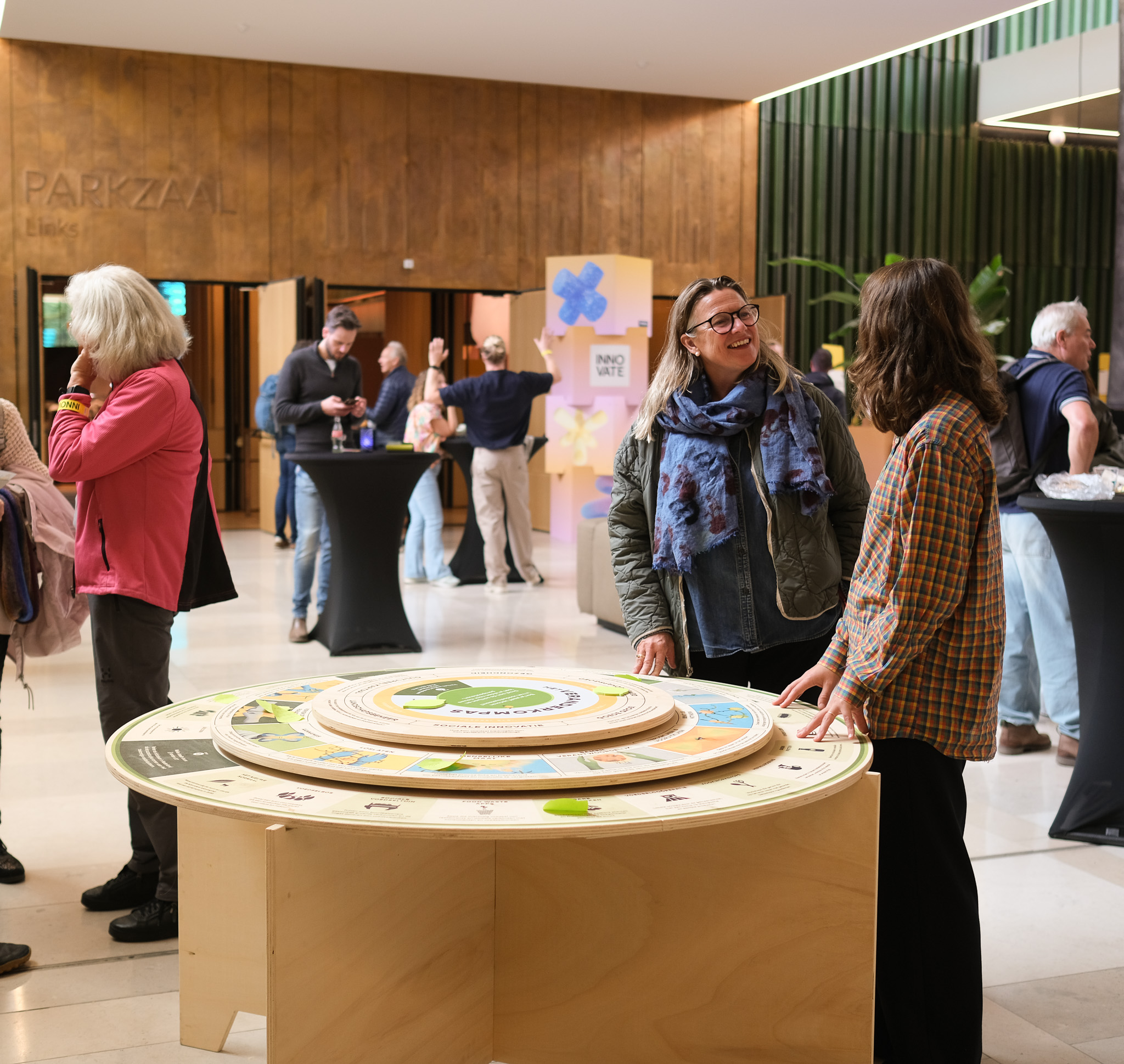A week of feeling food systems on a farm in Zeeland
Bodemkracht: A week of feeling through food systems on a farm in Zeeland

I’ve been lucky enough to spend the last few weeks travelling in Athens and Northern Italy. Alongside inspiring conversations with NGFP fellows Irene Coletto, Francesca Fattorini, I went to two exhibitions about the future and was struck by the differences in how they communicated it.
The first was The Circle - Solutions for a possible future by Luca Locatelli in Gallerie D’Italia in Turin. Documenting two years of travels across Europe in search of emblematic and replicable practices around ecological transitions, Locatelli produces a stunning series of enormous photographs showing the beauty of emerging scientific innovations. This is coupled with interactive data visualisations that help the visitor to expand their understanding of the scale and nature of the industrial shifts needed to reach net zero.
I found the first two rooms enticing, with the data and photographs blending to draw me into an alien world of eco-centric industrial production methods. But as the rooms progressed, the endless arrays of glistening metal tubes, algae reactors, and green glass domes began to leave me dry. The data visualisations became opaque and hard to take in. The technologies presented were undoubtedly optimistic and the message was urgent and necessary. Is my attention span just crumbling from too much time spent online?

A week earlier in Athens, I had another experience. There, I visited Modern Love - or love in the age of cold intimacies in the EMST Museum. I was captivated for hours by love letters, short films and critical fabulations from all sorts of futures where technology has changed the way people date, love and engage in relationships.
In one piece “Do you have work tomorrow” artist Mahmoud Khaled presents black and white screenshots of a fictional Grindr conversation that alludes to the Political Turmoil that seeps into relationships in modern day Cairo.

Another piece The Warmth, by Laura Cemin imagines a world where digital loving leads to a global deficit in physical warmth, and the new rituals that emerge to fill this void. Both of these projects use storytelling to brilliantly repurpose everyday objects (or apps) to transport us into worlds with unfamiliar rules and norms. They make us question how we would act in the same situations.

So, having had such different responses to these two futures exhibitions, I was left questioning quite why one captured my attention, while the other left me dry? For me the differences were twofold:
One is how they relate to the human and our everyday experiences. Sure, how could an exhibition on love not pull slightly stronger on our heart strings? But the Locatelli exhibition gave no tie to the visitor beyond the following lines: “These stories do not portray people but they speak deeply about people, about potential and responsibility people have in rectifying the mistakes of the past.” For me the people were lost and invisible among the verdant plants and gleaming machines. Modern Love, on the other hand, had people at the heart and asked the viewer at every turn : what would this future feel like for you?
Second, the two exhibitions differ in how they explore the concept of ‘the future’. In Locatelli’s, the future is central to the theme and narrative, yet the works showcase various technological possibilities, without in any way helping the visitor to imagine a future that embodies them. By contrast, the exhibition on love explores and extrapolates the human intricacies and implications of future worlds, without ever needing to talk about ‘the future’.
It's often said that the future is not a crystal ball but a mirror - at its best the future can help us to reflect, re-interpret, and change the present. For me, one of these exhibitions did that and the other did not.
It's not enough to claim that something is ‘the future’ and hope that makes it exciting. It's not enough to show off new technologies, signals or trends and leave the viewer to imagine what they might mean for real life. To be truly impactful, we need to build nuanced worlds and to tell human stories. We need to hold someone's hand as they journey through that world and learn to see themselves within it.
We need to remember that exploring the future is only as useful as it is made personal, relatable and urgent in the present.

Bodemkracht: A week of feeling through food systems on a farm in Zeeland

How do people take ownership and find their own solutions to reshape the food system.

Launching Earthlings - project platform dedicated to engaging with the “polycrisis” through culture

Two opportunities to get involved with our projects this fall.
55 Wallis Rd, Unit K
Hackney Wick, London, E95LH, UK
Havenstraat 157, 3024SJ
Rotterdam, the Netherlands